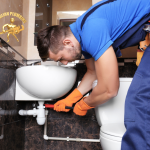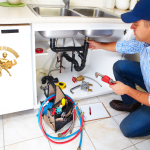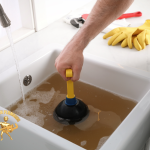Toilet repairs component replacement is a crucial aspect of maintaining the functionality and aesthetics of bathroom plumbing systems. Over time, even the best-built toilets can experience wear and tear that requires the replacement of key components such as flappers, fill valves, and seals.
Why Replace Toilet Components?
Regular maintenance and timely replacement of toilet components are essential not only to ensure the efficient operation of the bathroom’s plumbing system but also to prevent water wastage, which can lead to unexpectedly high water bills. Additionally, updating these components during bathroom renovations can significantly enhance the efficiency and aesthetics of the space, contributing to a more modern and refined bathroom environment.
Key Components: Focus on Flappers, Fill Valves, and Seals
- Roles of Main Components in Toilet Efficiency: The flapper, fill valve, and seals are integral to the toilet’s functionality. The flapper controls the release of water from the tank to the bowl, the fill valve regulates the water refilling the tank, and the seals prevent leaks between the tank and the bowl.
- Overview of Common Issues with Flappers, Fill Valves, and Seals: Common issues include flappers that no longer form a watertight seal, resulting in running toilets; fill valves that fail to shut off, causing overflow; and degraded seals that lead to leaks. These issues not only increase water usage but can also cause significant damage over time.
Identifying the Need for Replacement
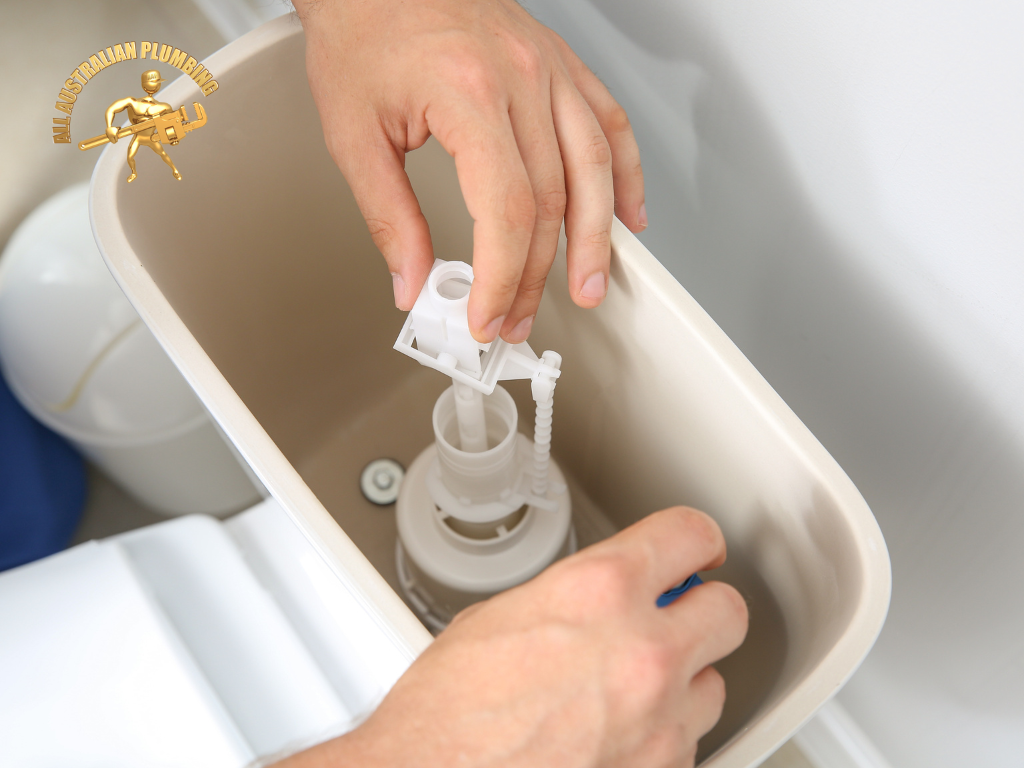
Recognizing when to replace toilet repairs components is key to maintaining the bathroom’s functionality and avoiding water damage and excess costs.
Signs That Indicate Replacement Is Necessary
- Symptoms of Running Toilets, Leaks, and Inefficient Flushing: These are clear indicators that one or more toilet components may need to be replaced. A running toilet or a toilet that flushes poorly often points to a problem with the flapper or fill valve.
- Understanding the Impact of Faulty Components on Bathroom Renovations: During renovations, replacing old or worn-out toilet components is essential to ensure the new bathroom will be both beautiful and functional.
Regular Maintenance Checks
- Importance of Regular Inspections by a Professional Plumber: Regular inspections help catch issues before they become emergencies, saving money and hassle in the long run.
- Preventing Emergencies with Timely Component Replacements: An expert plumber can assess the condition of the toilet’s internal mechanisms and recommend replacements or repairs that will ensure reliability and efficiency.
Step-by-Step Guide to Replacing a Toilet Flapper
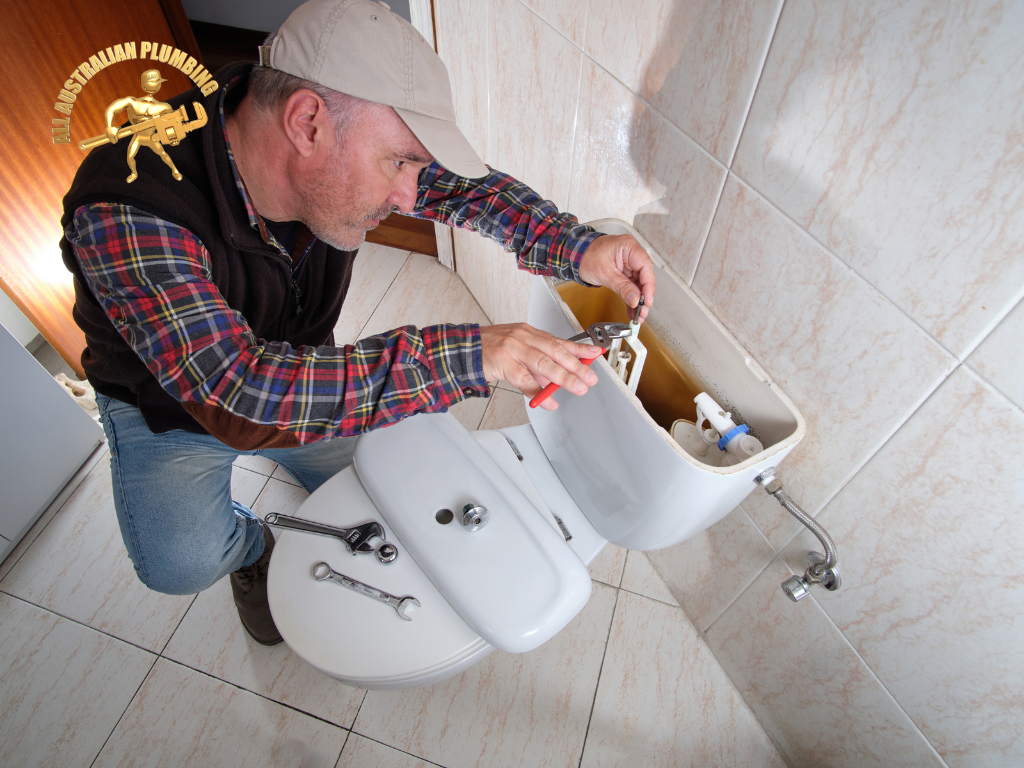
Replacing a toilet flapper is a task that homeowners may choose to do themselves; however, hiring a professional plumber ensures that the job is done correctly and efficiently.
Tools and Materials Needed
- Essential Tools for Replacing a Toilet Flapper: Includes a pair of gloves, a large sponge, a bucket, and a replacement flapper.
- Choosing the Right Replacement Parts: It is crucial to select a flapper that is compatible with the toilet model to ensure a good fit and proper functionality.
Detailed Instructions
- Step-by-Step Process from Shutting Off the Water Supply to Testing the New Flapper: Begin by shutting off the water supply to the toilet. Remove the tank lid and flush the toilet to drain the water. Unhook the old flapper and install the new one, ensuring it’s securely connected to the flush valve and chain.
- Tips for Ensuring a Proper Fit and Functionality: Adjust the chain length so the flapper opens and closes properly without extra slack that could prevent a seal.
How to Replace a Fill Valve
Replacing a fill valve is an important task to maintain the proper functioning of your toilet and to prevent water wastage. Here’s a detailed guide on how to replace a fill valve, along with some tips to ensure optimal performance.
Understanding Fill Valve Functionality
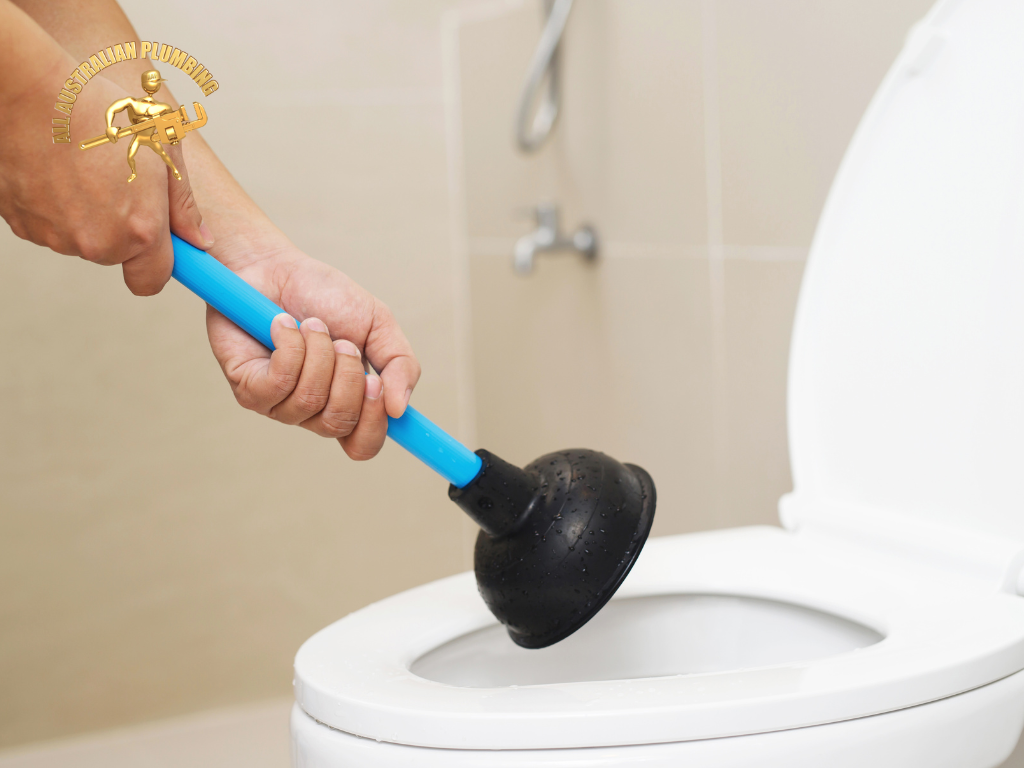
Role of Fill Valves in Water Management
The fill valve is responsible for refilling the toilet tank after each flush. It controls the water flow into the tank and stops when the water reaches the designated level, ensuring efficient water usage and preventing overflow.
Importance of Proper Fill Valve Operation in Bathroom Renovations
During bathroom renovations, ensuring that the fill valve is functioning correctly is crucial. A properly operating fill valve helps maintain consistent water levels, prevents leaks, and contributes to the overall efficiency of your bathroom’s plumbing system.
Step-by-Step Replacement Guide
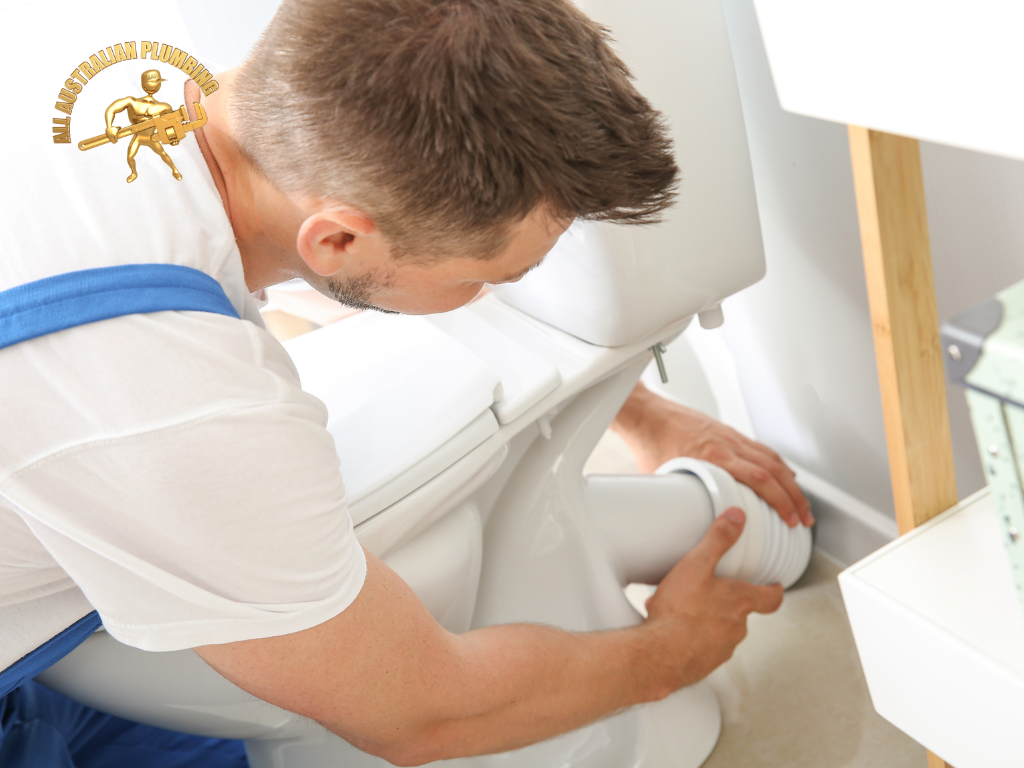
Detailed Instructions for Replacing a Fill Valve
- Shut Off the Water Supply: Locate the shut-off valve behind the toilet and turn it clockwise to stop the water flow.
- Drain the Tank: Flush the toilet to empty the tank. Use a sponge to soak up any remaining water.
- Remove the Old Fill Valve: Disconnect the water supply line from the bottom of the fill valve. Unscrew the locknut on the underside of the tank and remove the old fill valve.
- Install the New Fill Valve: Insert the new fill valve into the tank, making sure the rubber washer is inside the tank to prevent leaks. Tighten the locknut on the underside of the tank.
- Reconnect the Water Supply Line: Attach the water supply line to the new fill valve and tighten it securely.
- Adjust the Water Level: Adjust the height of the fill valve according to the manufacturer’s instructions to ensure the correct water level in the tank.
- Turn the Water Supply Back On: Open the shut-off valve by turning it counterclockwise. Let the tank fill and check for any leaks.
Adjustment Tips for Ensuring Optimal Water Level
- Ensure the fill valve is adjusted to the proper height to maintain the correct water level.
- The overflow tube should be at least an inch below the fill valve.
- Adjust the float to regulate the water level, preventing overflow and ensuring efficient flushing.
Seal Replacement for Leak Prevention
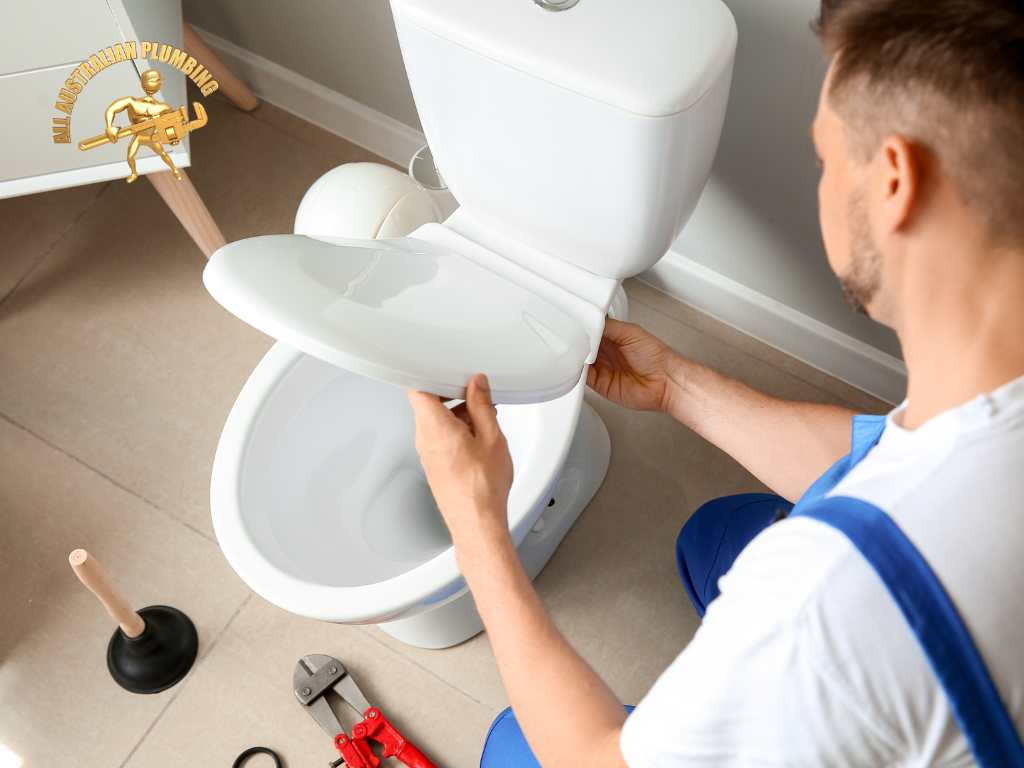
Replacing a faulty seal is crucial for preventing leaks that can damage bathroom flooring and affect hygiene.
Identifying Indications of a Bad Seal
- Water Leaks: Puddles of water around the base of the toilet indicate a bad seal.
- Unusual Odours: Persistent sewage smells can be a sign of a deteriorated seal.
- Toilet Movement: If the toilet rocks back and forth, the seal may be compromised.
Impact of Faulty Seals on Bathroom Flooring and Hygiene
A faulty seal can lead to water damage on the bathroom floor, promoting mould growth and creating unsanitary conditions. Regular inspection and timely replacement of seals are essential for maintaining a clean and safe bathroom environment.
Replacing the Seal

Instructions for Removing the Old Seal and Installing a New One
- Shut Off the Water Supply: Turn off the water supply to the toilet.
- Drain the Tank and Bowl: Flush the toilet to empty the tank and bowl. Use a sponge to remove any remaining water.
- Remove the Toilet: Unscrew the bolts at the base of the toilet. Gently rock the toilet back and forth to break the wax seal. Lift the toilet and set it aside.
- Remove the Old Seal: Scrape off the old wax seal from the toilet base and flange.
- Install the New Seal: Place a new wax seal on the flange, ensuring it is centered.
- Reinstall the Toilet: Carefully lower the toilet onto the new seal. Press down to compress the seal and secure the toilet to the floor. Tighten the bolts evenly.
Ensuring a Tight Fit to Prevent Future Leaks
- Ensure the toilet is properly aligned before tightening the bolts.
- Avoid overtightening the bolts to prevent cracking the toilet base.
- Test for leaks by turning the water supply back on and checking around the base of the toilet.
When to Call Professional Plumber Services
In some cases, attempting to fix plumbing issues on your own may lead to more harm than good. Recognising when to call in professional plumber services can save you time, money, and stress.
Understanding Situations Where DIY May Not Be Advisable
While some minor plumbing tasks can be handled with a DIY approach, certain situations are better left to professionals. These include:
- Persistent Leaks: If you have tried to fix a leak multiple times and it keeps coming back, a professional plumber can identify the root cause and provide a lasting solution.
- Major Blockages: Severe clogs that don’t respond to standard plunging or drain cleaning methods may require specialised equipment and expertise.
- Old Plumbing Systems: Older homes with outdated plumbing systems might have unique challenges that a professional plumber is better equipped to handle.
Examples of Complex Repairs Best Handled by Professionals
- Sewer Line Issues: Problems with the sewer line, such as blockages or leaks, need immediate and professional attention to avoid health hazards and extensive property damage.
- Water Heater Repairs: Water heaters are complex appliances that require technical knowledge to repair safely and efficiently.
- Bathroom Renovations: Major renovations often involve intricate plumbing work, including rerouting pipes, installing new fixtures, and ensuring everything meets building codes.
Benefits of Hiring a Professional for Bathroom Renovations
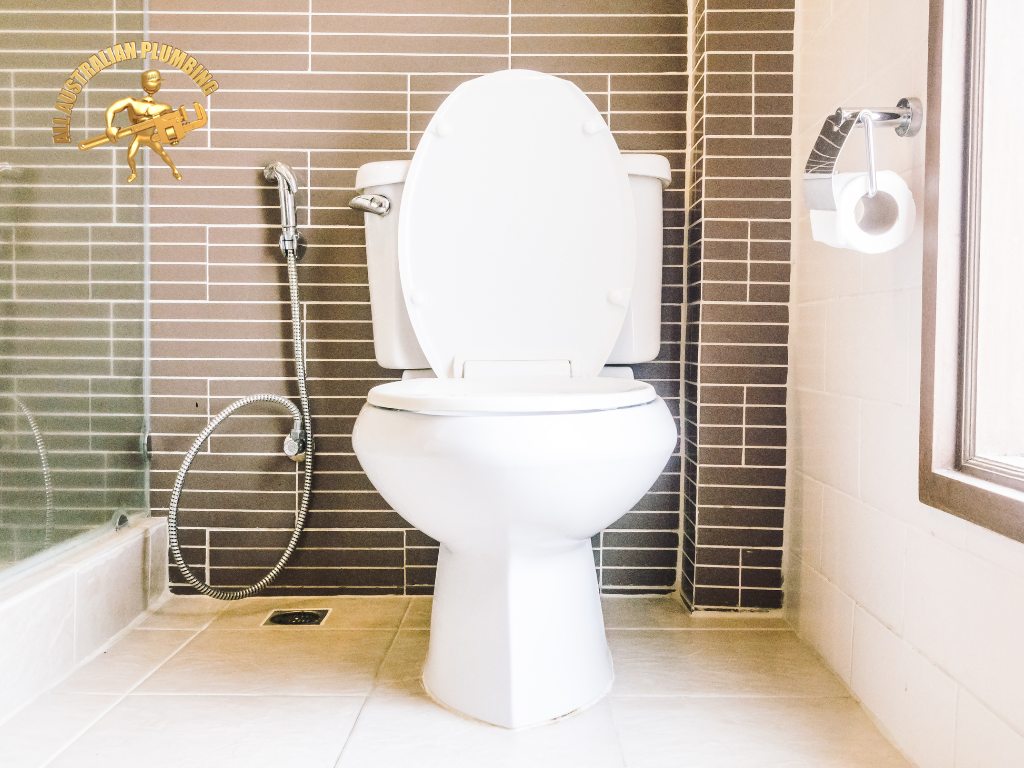
Advantages of Professional Installations
- Expertise: Professional plumbers have the training and experience to handle all aspects of bathroom renovations, from planning to execution.
- Efficiency: Hiring a professional ensures the job is done correctly and efficiently, minimising the disruption to your daily routine.
Ensuring Guaranteed Workmanship and Extended Durability
- Quality Work: Professionals provide high-quality workmanship that ensures your plumbing fixtures and systems function properly and last longer.
- Warranties: Many professional plumbing services offer warranties on their work, giving you peace of mind that any issues will be addressed promptly and without additional cost.
Conclusion
Proper installation and regular maintenance of your toilet components are crucial for the overall functionality and efficiency of your bathroom. Addressing issues promptly and correctly can prevent more significant problems down the line.

